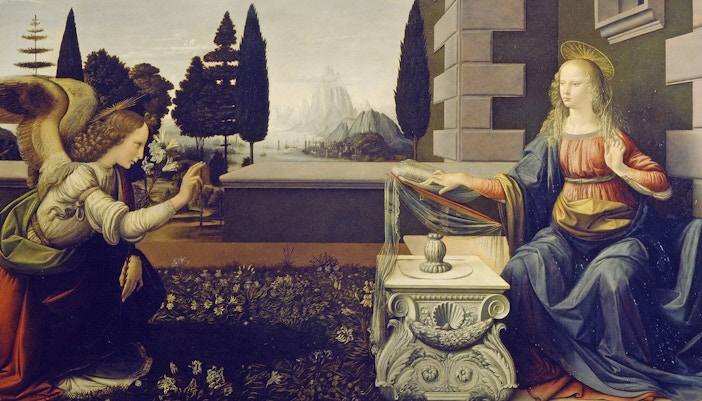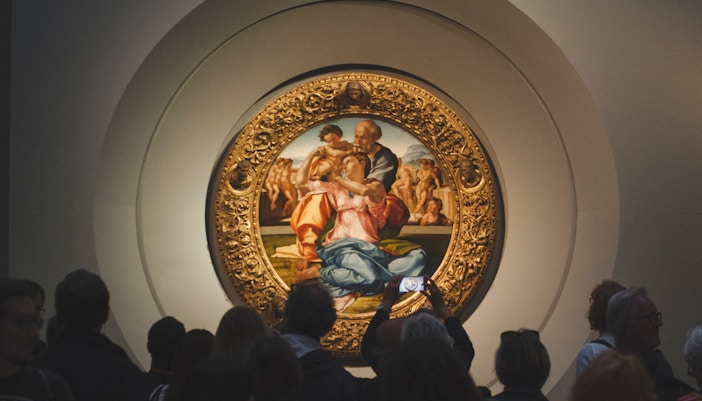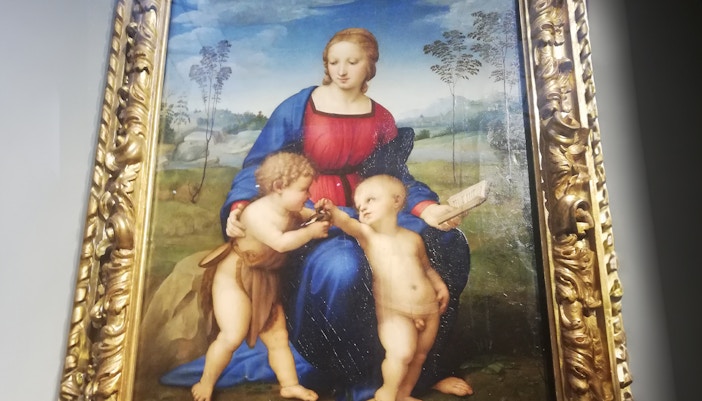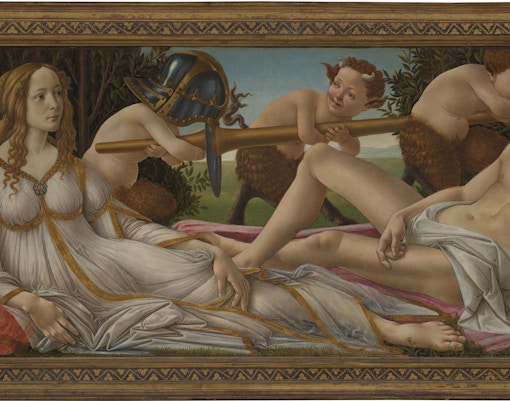⌛Time it right
Rooms 10–14 are crammed by mid-morning. Arrive just after opening or around 5 p.m., when light filters in softly and tours have thinned out.
Few artists capture the magic of the Renaissance like Sandro Botticelli. His paintings blend beauty, myth, and devotion in ways that feel timeless. At the Uffizi Gallery in Florence, you can admire his most famous works up close, including The Birth of Venus and Primavera.
Botticelli’s art is displayed prominently on the gallery’s second floor, where his delicate brushwork and luminous colors remain crowd favorites. All his paintings can be viewed with your standard Uffizi Gallery ticket, so no separate booking required.
Perhaps Botticelli’s most famous painting, The Birth of Venus shows the goddess emerging from the sea on a shell, blown ashore by the winds of love. Painted around 1485, it was likely commissioned by the Medici. Its graceful figures, flowing lines, and luminous colors made it a symbol of Renaissance beauty.
Also known as Allegory of Spring, this masterpiece depicts Venus surrounded by mythological figures, celebrating love, fertility, and rebirth. Commissioned by the Medici around 1480, it’s one of the most analyzed works of Renaissance art. Visitors love discovering the hidden details, like the hundreds of botanically accurate plants woven into the scene.
This altarpiece shows the Three Wise Men visiting the infant Christ, but it’s also filled with portraits of Florence’s elite, including members of the Medici family. Botticelli even painted himself into the scene, gazing out at the viewer.
In this delicate painting, the Virgin Mary holds a pomegranate, symbolizing both Christ’s future sacrifice and eternal life. Botticelli’s soft lines and elegant figures give the work a serene, timeless quality.
Botticelli’s art belongs to the Italian Renaissance, a movement focused on harmony, beauty, and classical inspiration. His figures are instantly recognizable for their graceful lines, delicate faces, and flowing drapery.
He often painted with tempera on wood, a medium that allowed for fine detail and luminous color. Unlike some of his contemporaries who embraced strict perspective, Botticelli leaned toward decorative elegance and symbolic storytelling. Mythology, allegory, and religious devotion were recurring themes.
His style bridges medieval tradition and Renaissance innovation, making his works feel timeless—romantic, poetic, and rich with meaning.




Botticelli isn’t just a Renaissance name, he’s a modern icon. His Birth of Venus has inspired everything from fashion editorials to album covers, showing up in brands like Dolce & Gabbana and in pop videos. The Pre-Raphaelite Brotherhood in 19th-century England revived his dreamy figures, cementing his legacy as the painter of beauty and mystery. Today, whether you scroll Instagram, flip through Vogue, or spot an art reference in film, chances are Botticelli’s Venus is still looking back at you.
No, his paintings are included with the standard Uffizi Gallery ticket.
You’ll find them in Rooms 10–14, often referred to as the Botticelli Rooms.
At least 30–45 minutes, especially if you want to admire more than The Birth of Venus and Primavera.
Mornings right after opening (8:15am) or later in the evening around 5pm are less crowded.
Yes, some works are also housed in the Accademia and smaller Florentine churches, like the Church of Santa Maria Novella (Adoration of the Child) and the Church of San Salvatore in Ognissanti.
His art combines mythological storytelling, decorative elegance, and emotional depth, making it both intellectual and poetic.
Uffizi Gallery Guided Tour With Timed Entry Tickets
Uffizi Gallery Private Tour